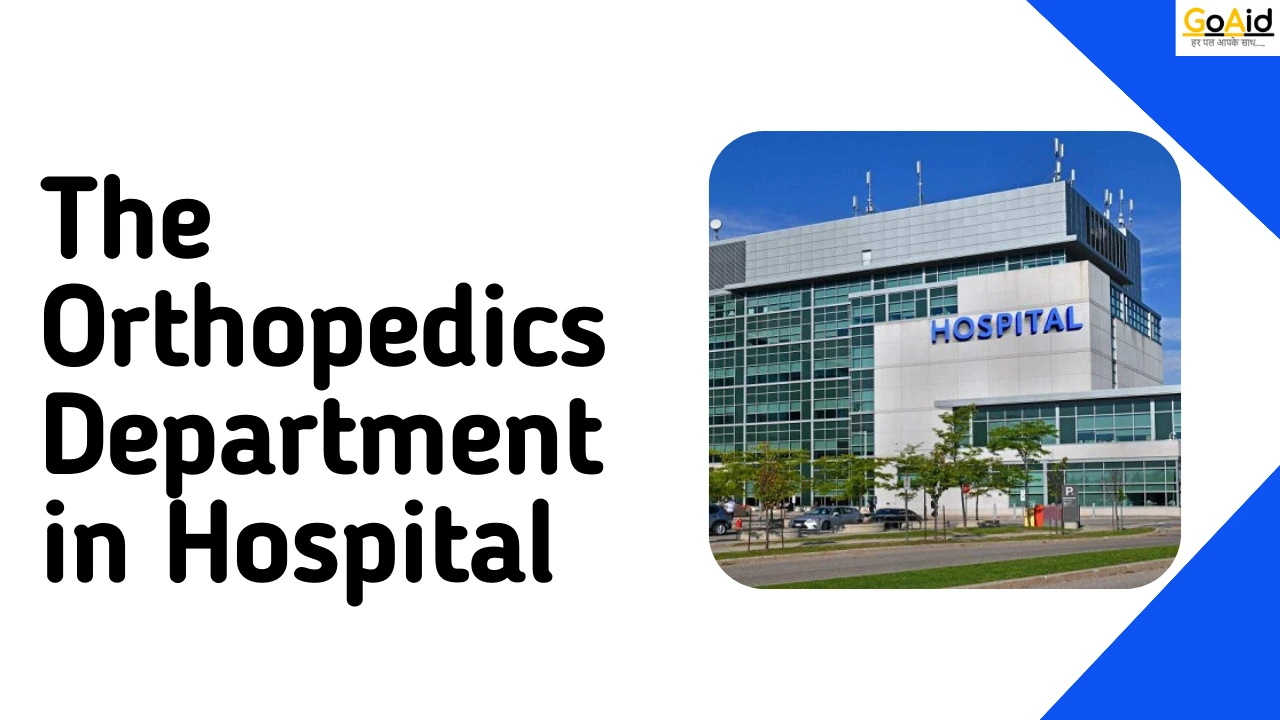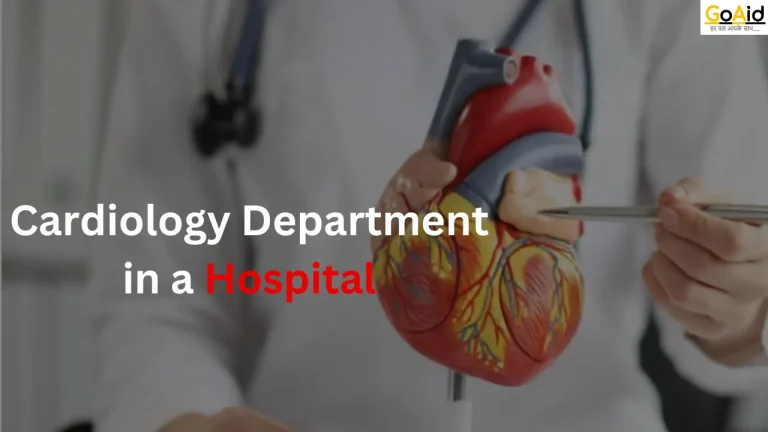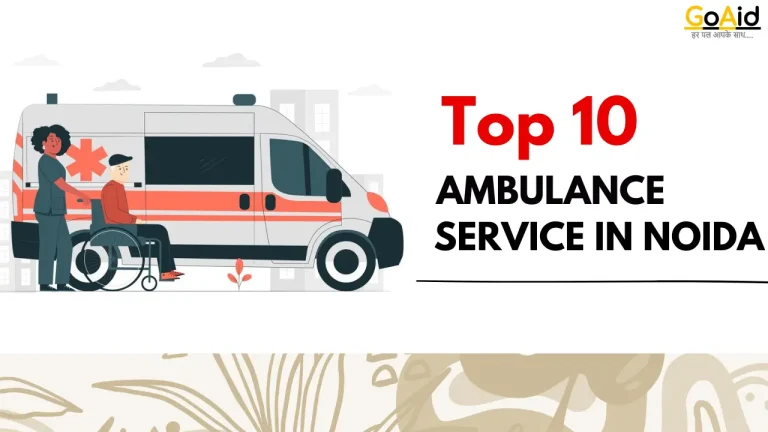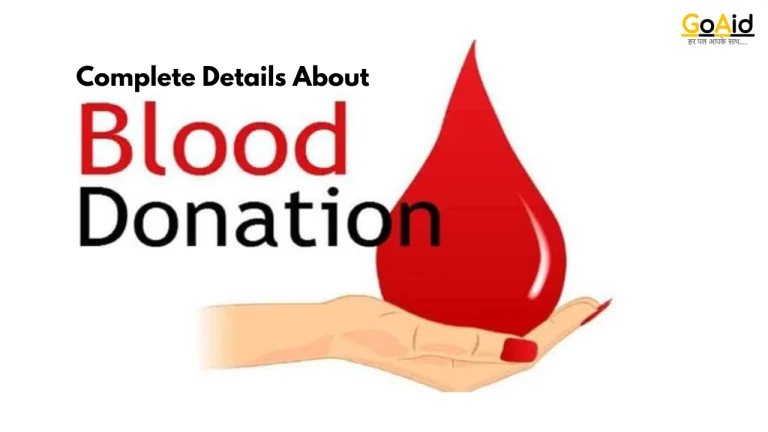You must have heard of the Orthopedics Department in Hospital. ItŌĆÖs a very popular department in a hospital and also one of the most crucial departments that deals with the bones and the skeleton structure of your body. However, those who have heard of this department, also donŌĆÖt have much information or knowledge about the Orthopedics Department in Hospital.
However, knowing this department can benefit you from many perspectives. This is why, in this blog, we have added a comprehensive detail about the Orthopedics Department in the Hospital such as what is Orthopedics Department, what is meaning of Orthopedics, the roles and responsibilities of this department in the hospital, features, and specialties of this department, essential equipment that gets used in this department and so on. If you are also excited to know about these details then read this blog to the end.
So, letŌĆÖs start-
What is the Orthopedics Department? ŌĆō Orthopedics Meaning
The Orthopedics Department in hospitals specializes in the treatment of musculoskeletal conditions affecting bones, joints, muscles, ligaments, and tendons. Patients visiting the Orthopedics Department may need care for fractures, joint replacements, or chronic conditions like arthritis.
This department plays a vital role in restoring mobility and reducing pain through treatments like physical therapy, surgeries, and orthopedic devices. Hospitals provide a variety of orthopedic services, from minimally invasive procedures to complex surgeries, helping patients recover from injuries or manage chronic conditions effectively.
Also Read: Pediatrics Department in Hospital
Roles & Responsibilities of the Orthopedics Department
These are the key roles and responsibilities of the Orthopedics department:
- Fracture Management: The Orthopedics department treats fractures through casting, splinting, or surgery. Ensuring proper healing and rehabilitation is crucial to restore mobility and prevent long-term damage, especially in complex cases like compound fractures.
- Joint Replacement: The department specializes in joint replacement surgeries, such as hip or knee replacements, for patients with severe arthritis or joint damage. Post-surgical rehabilitation is essential to ensure the best functional recovery.
- Spine Care: Orthopedics provides treatment for spine-related conditions, including scoliosis, herniated discs, and spinal fractures. It offers both conservative treatments like physical therapy and surgical interventions, depending on the severity of the condition.
- Sports Injury Management: The department manages sports-related injuries such as ligament tears, fractures, and dislocations. Treatments range from non-surgical methods like bracing to surgical repairs, with a focus on rehabilitation for a full recovery.
- Pediatric Orthopedics: Pediatric orthopedics deals with bone, joint, and muscle conditions in children, such as congenital deformities or growth abnormalities. The department ensures early intervention to support normal development and mobility.
- Arthritis Management: The Orthopedics department treats arthritis through medications, physical therapy, or joint surgery. Managing pain and improving joint function are essential goals for enhancing the patientŌĆÖs quality of life.
- Trauma Care: The department handles traumatic injuries from accidents, providing urgent surgical interventions or non-surgical treatments to stabilize and repair damaged bones, muscles, and joints.
- Rehabilitation Services: Post-surgery or injury, the department offers rehabilitation services, including physical therapy, to restore strength, flexibility, and mobility, ensuring patients regain their functional abilities.
- Orthopedic Surgeries: Specialized orthopedic surgeries, such as arthroscopy or reconstructive surgeries, are performed to repair damaged bones, ligaments, and joints. The department focuses on minimally invasive techniques to promote faster recovery.
- Bone Health Education: Educating patients on bone health, including preventing osteoporosis and fractures, is a key responsibility. The department promotes healthy lifestyle choices to maintain strong bones and prevent musculoskeletal issues.
Read More: Complete Guide to the Cardiology Department in Hospitals | Roles, Types, Diseases Treated & Doctors
Features and Specialities of the Orthopedics Department
These are the key features and specialties of this department:
Features of the Orthopedics Department
- Fracture Care: This feature provides expert treatment for bone fractures through casting, surgery, or bracing.
- Joint Replacement: This feature specializes in hip and knee replacements for restoring mobility in patients with joint damage.
- Sports Injury Treatment: This feature treats ligament tears, sprains, and fractures for athletes.
- Spine Care: This feature manages spinal disorders like scoliosis, herniated discs, and spinal fractures.
- Rehabilitation Services: This feature offers post-surgical and injury rehabilitation to regain strength and mobility.
Specialties of Orthopedics Department
- Pediatric Orthopedics: This specialty specializes in treating congenital and developmental bone issues in children.
- Arthroscopy: This specialty uses minimally invasive techniques to treat joint conditions.
- Trauma Care: This specialty provides urgent care for accident-related musculoskeletal injuries.
- Orthopedic Oncology: This specialty treats bone cancer through surgical and non-surgical methods.
- Hand Surgery: This specialty is expertise in treating hand-related injuries and conditions for better functionality.
What treatment is provided under the Orthopedics Department?
The Orthopedics department provides specialized treatment for bone, joint, and muscle disorders, including fractures, arthritis, and sports injuries. The goal is to restore mobility, reduce pain, and improve the overall quality of life for patients.
- Fracture Management: This treatment treats fractures using casting, splinting, or surgery to ensure proper healing, with follow-up rehabilitation for recovery.
- Joint Replacement: This treatment provides hip and knee replacement surgeries to relieve pain and restore function in patients with arthritis or joint damage.
- Spinal Treatments: This treatment treats spine disorders, such as herniated discs and scoliosis, with both non-surgical and surgical options.
- Sports Injury Treatment: This treatment manages sports-related injuries like ligament tears or sprains through surgeries, physiotherapy, or bracing.
- Pediatric Orthopedics: This treatment specializes in treating bone and joint conditions in children, including congenital deformities and growth abnormalities.
- Arthritis Management: This treatment offers medical and surgical treatments for osteoarthritis and rheumatoid arthritis to reduce pain and improve mobility.
- Rehabilitation Therapy: This treatment provides post-surgical or injury rehabilitation to restore strength and flexibility in patients through physiotherapy and exercise programs.
Essential Equipment used in the Orthopedics Department
These are the key essential equipments used in Orthopedics departments:
- X-Ray Machines: Provides detailed images of bones to diagnose fractures, dislocations, and other orthopedic conditions.
- Casting Equipment: Includes materials like plaster and fiberglass for immobilizing broken bones during the healing process.
- Orthopedic Drills and Saws: Used during surgeries to cut and shape bones, often for joint replacements or fracture repairs.
- Traction Devices: Applies controlled force to bones and joints, helping realign fractures or relieve pressure on the spine.
- Bone Densitometers: Measures bone density to diagnose conditions like osteoporosis, ensuring early intervention.
- Arthroscopy Instruments: Used for minimally invasive joint surgeries, providing real-time visuals of the jointŌĆÖs interior.
- External Fixators: Stabilizes bone fractures externally with pins and rods, allowing proper alignment during healing.
- Joint Prostheses: Artificial implants used in joint replacement surgeries for hips, knees, or shoulders, restoring mobility.
Know More: Top 10 Hospitals in Delhi | Updated List 2024
Conclusion to the Orthopedics Department
In conclusion, we have added complete details about the Orthopedics department in hospitals. This includes the meaning of Orthopedics, the features and specialties of Orthopedics, and the roles and responsibilities of the Orthopedics department.
We also discussed the essential equipment used in Orthopedics, giving a thorough understanding of the departmentŌĆÖs functionality. We hope you have gathered all the information about the Orthopedics department in hospitals. If you have any other questions, feel free to ask them in the comment box.
Book Ambulance: GoAid Ambulance Service
FAQs related to the Orthopedics Department
The Orthopedics department focuses on diagnosing, treating, and managing disorders of the musculoskeletal system, including bones, joints, ligaments, and muscles.
Treatments include fracture management, joint replacements, spinal surgeries, and non-surgical options like physical therapy.
An Orthopedic surgeon is a doctor who specializes in surgeries for bones and joints, such as joint replacements and fracture repairs.
Orthopedic surgeries include joint replacements, spinal surgeries, and procedures to repair fractures or treat deformities.
Arthroscopy is a minimally invasive surgical procedure used to diagnose and treat joint issues using a small camera inserted into the joint.
Essential equipment includes X-ray machines, orthopedic drills, traction devices, and joint prostheses for joint replacements.
Joint replacement surgery involves replacing a damaged joint, such as the hip or knee, with a prosthesis to restore mobility.
Tests include X-rays, MRIs, and CT scans, which help diagnose fractures, dislocations, and other musculoskeletal conditions.
Rehabilitation involves physical therapy and exercises to help patients recover mobility, strength, and function after surgery or injury.
Orthopedics treats sports injuries like ligament tears, fractures, and dislocations through both surgical and non-surgical methods.
















